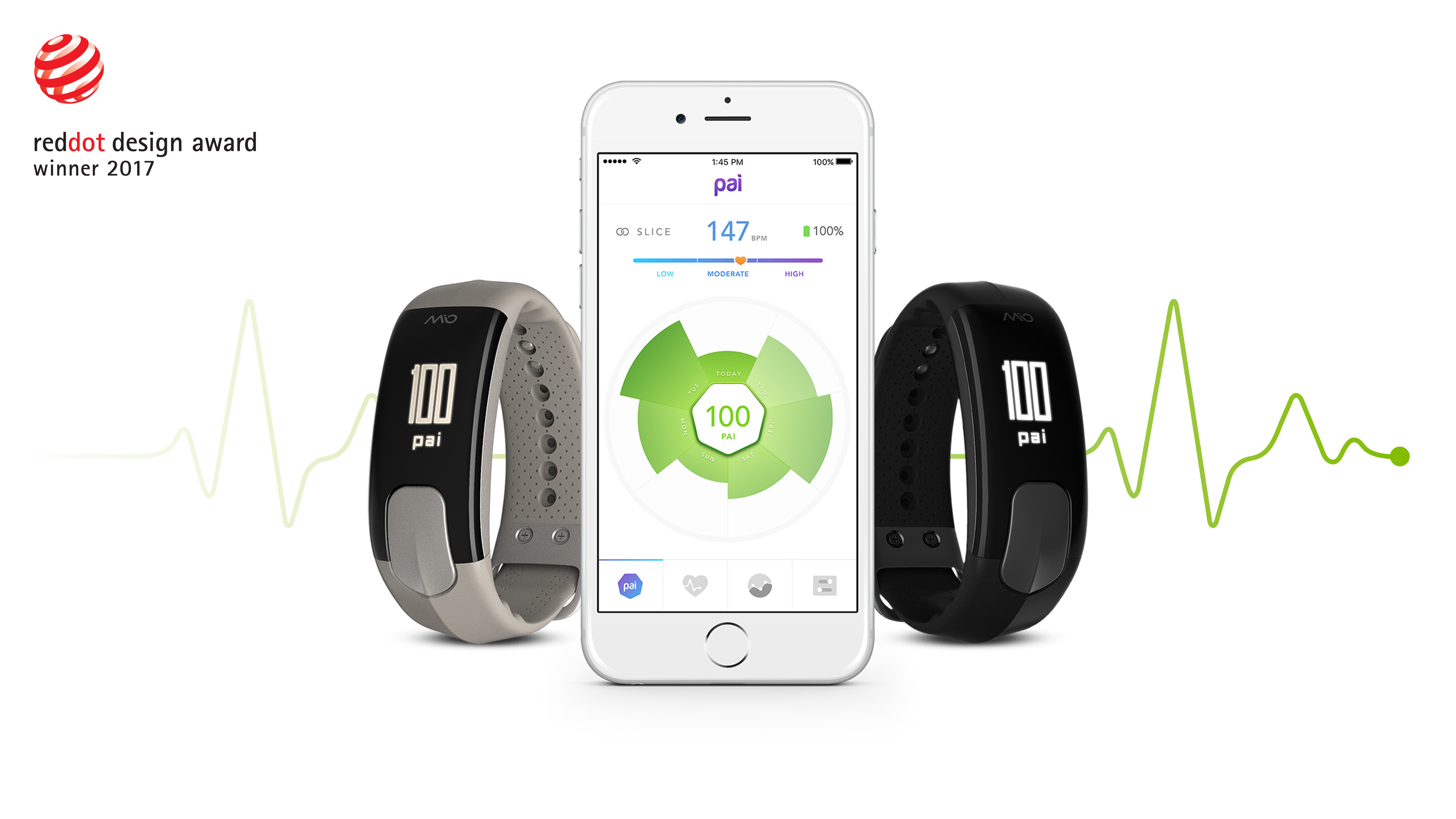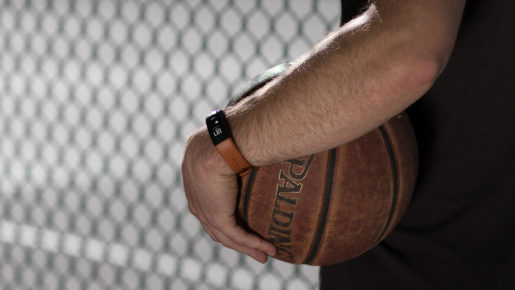1. Congratulations on winning the prestigious Red Dot Award! Could you tell us a bit about the winning product you co-designed with Woke Studio and yourself?
Jason and Scott: Thanks!
Jason: Mio PAI is an app with a new way of tracking your fitness based on your heart rate. Anything that increases your heart rate earns you PAI points, even gardening or playing with your kids. It relates better to what we actually do every day than most fitness trackers.
Scott: Mio SLICE is the first fitness wearable that provides all-day heart rate tracking and a Personal Activity Intelligence (PAI) score - the most scientifically meaningful way to track all your activity, motivating you to stay healthy.
We designed it to fit into life beyond the gym. We reduced the interface to a simple one-button input and selected premium materials to make the band fashionable and something users would want to wear throughout the day.
The Red Dot Jury had this to say: Mio Slice Band combines distinct design with mature technical finesse to create an attractive smart tracker for health-conscious users.
2. How have your studies at Emily Carr influenced your work and career so far?
Jason: Emily Carr encouraged me to think about products as part of larger systems instead of in isolation. Even though I was originally an Industrial Design major, I had a pretty wide-ranging set of interests in school. I took classes and co-ops that built my skills in UX design, writing, coding, and entrepreneurship - all of which have been valuable in my career so far.
Scott: My experience and learning at Emily Carr has created a toolbox that I reach into daily. It has helped me approach design through the lens of both empathy and aesthetics. I’ve learned loads since graduating but this foundation has created a framework of how to begin each project.
3. What is the most interesting part of doing what you do?
Jason: Getting to work with all kinds of different clients and learning new things on every job.
Scott: I really enjoy problem solving and luckily for me it is a daily occurrence. This is in all aspects of my design practice: how can I work with a client and a factory to make this product more useful, more interesting, more beautiful.
4. Did you have a mentor when you were a student? What are your thoughts on mentorship? Would you be open to being a mentor for students?
Jason: I got to know some of my professors, and ended up
working for them doing research. Haig Armen was the one who originally
introduced me to Afshin, who runs Woke.
I’m always amazed when I’ve reached out to someone and they take the
time to meet with me or write a thoughtful response. Most people really
enjoy being asked for advice and are happy to provide it because it
makes them feel good.
For the same reason, I’m always happy when people reach out to me. I
stay in touch with former interns we’ve had, too. It’s really satisfying
to see someone you’ve guided and worked with grow into a fully capable
designer.
Scott: When I was a student Louise St. Pierre really helped me understand the emotion inherently contained within a product or experience. Whether explicit or not the user’s story is on display. Mentorship is incredibly powerful; it can help you see things clearer. It can change your life.
5. What advice would you give to current Emily Carr students and fellow alumni?
Jason: Iterate! I didn’t do enough of it in school - I thought I
was so smart that I’d nail everything on the first try. You never nail
it on the first try. Even super talented people never nail it right off
the bat - the real talent is that they’re able to take a step back from
their work, evaluate what needs improvement, and rework it. This is also
how you develop your technical skills, whether it’s becoming proficient
with software, sketching well, or coming up with beautiful
compositions. There’s no substitute for putting the hours in.
Scott: Listen to everything, ignore a good portion of it and try to find the kernel of truth. Sometimes this comes quickly; sometimes you have to turn a problem or a design over and over again. When you find it you’ll know. If you have to ask – ‘Does this seem right to you?’ You almost certainly know the answer already.


